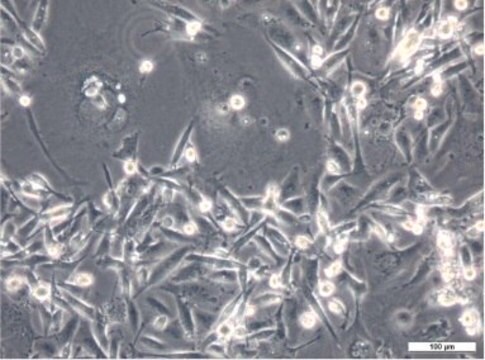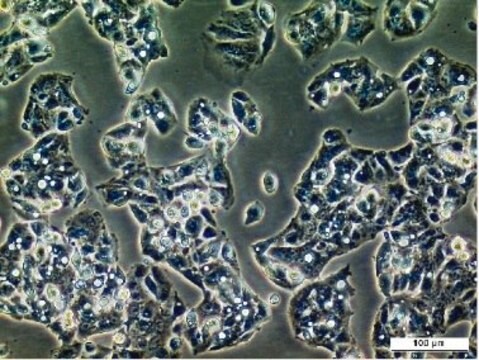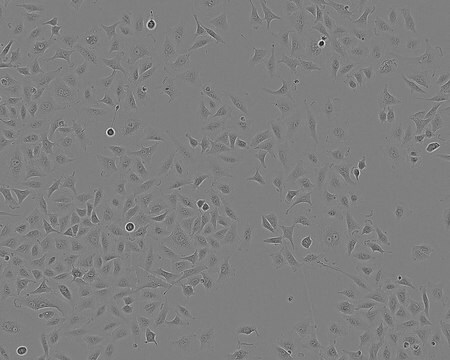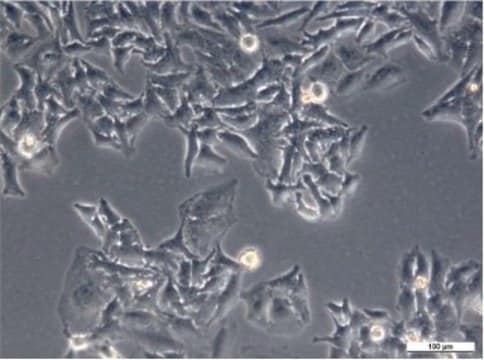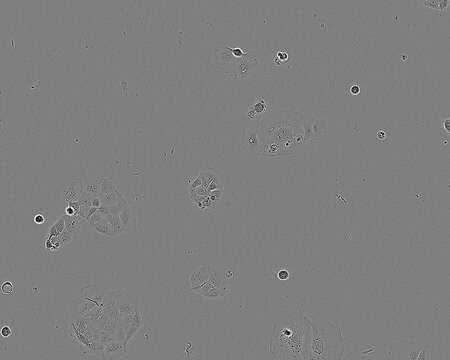MCF7 Cell Line human
86012803, human breast (adenocarcinoma), Epithelial-like
Synonym(s):
IBMF-7 Cells, MCF7 Cells, Michigan Cancer Foundation-7 Cells, ssMCF-7 Cells
About This Item
Recommended Products
product name
MCF7 Cell Line human, from human breast(adenocarcinoma), 86012803
biological source
human breast (adenocarcinoma)
growth mode
Adherent
karyotype
2n = 46, hypertriploid to hypotetraploid
morphology
Epithelial-like
products
Not specified
receptors
Reported to express the oestrogen and progesterone receptor
technique(s)
cell culture | mammalian: suitable
relevant disease(s)
cancer
shipped in
dry ice
storage temp.
−196°C
Cell Line Origin
Cell Line Description
Application
DNA Profile
Amelogenin: X
CSF1PO: 10
D13S317: 11
D16S539: 11,12
D5S818: 11,12
D7S820: 8,9
THO1: 6
TPOX: 9,12
vWA: 14,15
Culture Medium
Subculture Routine
Other Notes
related product
Certificates of Analysis (COA)
Search for Certificates of Analysis (COA) by entering the products Lot/Batch Number. Lot and Batch Numbers can be found on a product’s label following the words ‘Lot’ or ‘Batch’.
Already Own This Product?
Find documentation for the products that you have recently purchased in the Document Library.
Our team of scientists has experience in all areas of research including Life Science, Material Science, Chemical Synthesis, Chromatography, Analytical and many others.
Contact Technical Service
